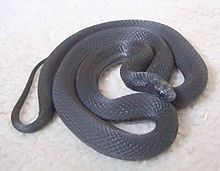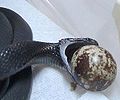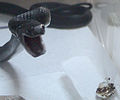
The Indian egg-eating snake or Indian egg-eater is a rare species of egg-eating snake in the family Colubridae. The species is endemic to the Indian subcontinent. It is also called Westermann's snake, reflecting its scientific name. The snake belongs to the monotypic genus Elachistodon.

The many-banded snake, also known commonly as the burrowing cobra, is a species of venomous snake in the family Elapidae. The species is native to Central Africa. There are three recognized subspecies.
Dromophis is a genus of colubrid snakes. There are two commonly accepted species in the genus Dromophis:

Dasypeltis scabra, known as the common egg eater, egg-eating snake or rhombic egg eater, is a species of snake in the family Colubridae. It is endemic to Africa.

Psammophis is a genus of snakes in the family Psammophiidae. The genus comprises 33 species, which are found in Africa and Asia. Psammophis are diurnal and prey on lizards and rodents which they actively hunt. All species in the genus are venomous, and the venom is considered mild and not dangerous to humans.

Lycophidion is a genus of nonvenomous lamprophiid snakes commonly referred to as the wolf snakes.
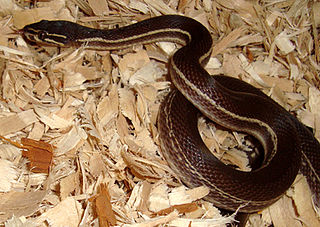
Boaedon is a genus of African lamprophiids consisting of the "brown" house snakes. The genus was originally described by Duméril but the species contained were reclassified as Lamprophis by Fitzinger in 1843, this taxonomy remained widely accepted until November 2010 when a phylogenetic study was published by C.M.R Kelly et al. who resurrected the Boaedon clade. Although commonly regarded as belonging to the Colubridae, primary literature usually lists them and related species as belonging to the family Lamprophiidae within the superfamily Elapoidea, which includes the venomous cobras and mambas.

The Lamprophiidae are a family of snakes found throughout much of Africa, including the Seychelles. There are 89 species as of July 2022.
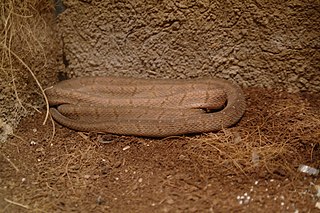
Dasypeltis medici, known commonly as the East African egg-eater and the eastern forest egg-eater, is a species of nonvenomous snake in the family Colubridae. The species is endemic to Africa.

Dasypeltis atra, commonly known as the African egg-eating snake or montane egg-eater, is a species of non-venomous snake in the family Colubridae. The species is endemic to Africa.

Philothamnus is a genus of snakes in the family Colubridae. The genus is endemic to Sub-Saharan Africa.
Dasypeltis confusa, commonly known as the confusing egg-eater or the diamond-back egg-eater, is a species of snake in the family Colubridae. The species is endemic to Africa.

Dasypeltis fasciata, commonly known as the Central African egg-eating snake or the western forest eggeater, is a species of snake in the family Colubridae. The species is endemic to Africa. It is one of 13 species in the genus Dasypeltis, and is occasionally kept in captivity as an exotic pet along with other members of its genus, particularly D. scabra and D. medici.
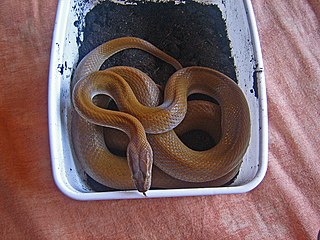
Lamprophiinae is a subfamily of lamprophiid snakes, a large group of mostly African snakes, most of which were formerly classified as colubrids but which we now know are actually more closely related to elapids.
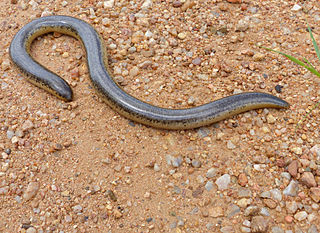
Afrotyphlops is a genus of snakes in the family Typhlopidae.

Myriopholis is a genus of snakes in the family Leptotyphlopidae. Most of the species were previously placed in the genus Leptotyphlops.
Cynisca is a genus in the family Amphisbaenidae, commonly known as worm lizards. 20 species are placed in this genus.
Dasypeltis gansi, commonly known as Gans's egg-eater or Gans' egg-eating snake, is a species of non-venomous snake in the family Colubridae. The species is native to West Africa.
Dasypeltis sahelensis, the Sahel egg-eater, is a species of non-venomous snake in the family Colubridae. The species is found in Senegal, Mali, Burkina Faso, Niger, Nigeria, Morocco, Western Sahara, Mauritania, and Chad.
